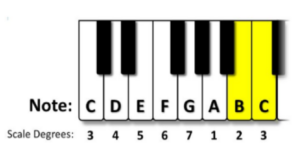The US Court of Appeals for the Federal Circuit reversed a district court’s grant of summary judgment of noninfringement after concluding that the district court erred by relying on expert testimony to construe a claim term in a manner not contemplated by the intrinsic evidence. Genuine Enabling Tech. LLC v. Nintendo Co., Ltd., et al., Case No. 20-2167 (Fed. Cir. Apr. 1, 2022) (Newman, Reyna, Stoll, JJ.)
Genuine owns a patent directed to a user interface device (UID) that, in the process of synchronizing and merging data streams into a combined data stream, directly receives microphone speech input and transmits speech output via a speaker. During prosecution, the inventor distinguished “slow varying” physiological response signals discussed in a prior art reference from the “signals containing audio or higher frequencies” in his invention, arguing that the latter posed a signal “collision” problem that his invention solved. In distinguishing the prior art, the inventor explained that his invention “describes, in its representative embodiments, how to combine the data from a UID (mouse) and from a high-frequency signal, via a framer, which is unique and novel.”
Genuine subsequently filed a lawsuit against Nintendo, accusing Nintendo’s Wii Remote, Wii Remote Plus, Nunchuk, WiiU GamePad, Switch Joy-Con Controller and Switch Pro Controller of infringing the patent. During claim construction, the parties asked the district court to construe the term “input signal.” Genuine proposed the construction of the disputed claim term to be “a signal having an audio or higher frequency,” whereas Nintendo proposed the narrower construction of “[a] signal containing audio or higher frequencies.” Relying on expert testimony, Nintendo also argued that the inventor “disclaimed signals that are 500 [Hz] or less . . . generated from positional change information, user selection information, physiological response information, and other slow-varying information.”
The district court found that the inventor’s arguments amounted to a disclaimer. Crediting Nintendo’s expert testimony, the district court construed “input signal” as “signals above 500 Hz and excluding signals generated from positional change information, user selection information, physiological response information, and other slow-varying information.” The district court subsequently granted summary judgment of noninfringement, finding that the accused controllers produced the types of slow-varying signals that the inventor had disclaimed during prosecution. Genuine appealed.
Genuine argued that the district court erred in construing “input signal” by improperly relying on extrinsic evidence and improperly finding that the inventor disclaimed certain claim scope during prosecution. The Federal Circuit agreed, reiterating that although extrinsic evidence can be helpful in claim construction, “the intrinsic record ‘must be considered and where clear must be followed,’” such that “where the patent documents are unambiguous, expert testimony regarding the meaning of a claim is entitled to no weight.” In this case, although the parties agreed that the inventor had disavowed claim scope during prosecution, there was a dispute as to the scope of the disclaimer beyond signals below the audio frequency spectrum.
The Federal Circuit explained that for a statement made during prosecution to qualify as a disavowal of claim scope, it [...]
Continue Reading
read more

 Subscribe
Subscribe



